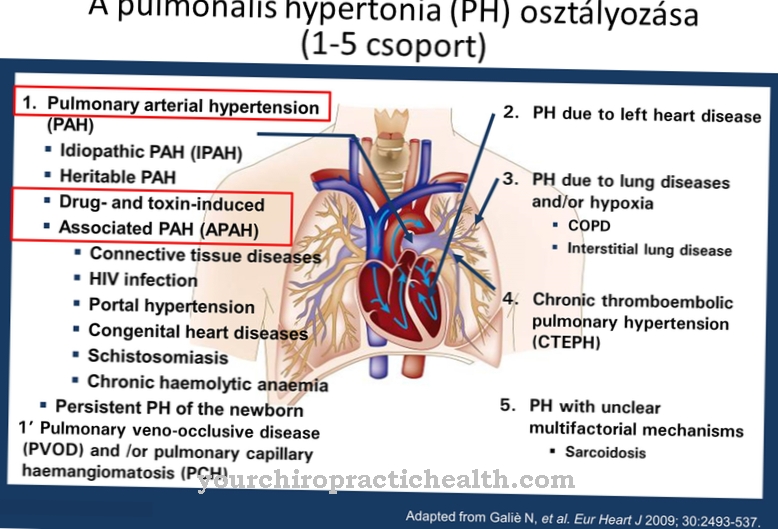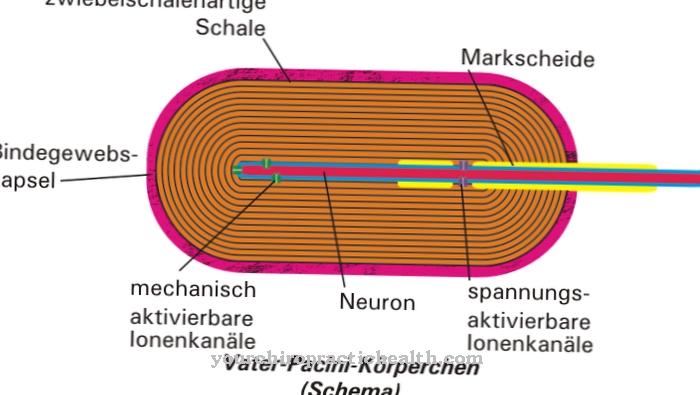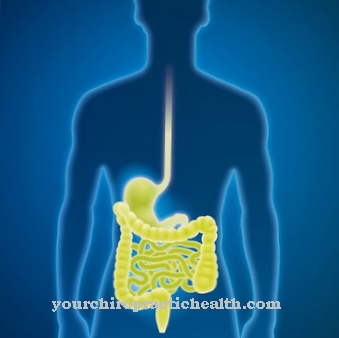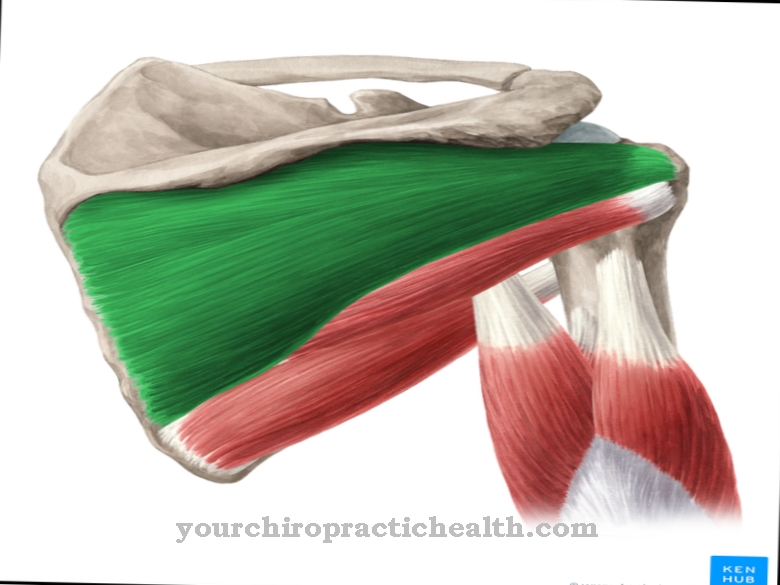A Sense organ converts external environmental stimuli into usable information for the organism. The stimuli, converted into electrical impulses, reach the brain via the nerve fibers and are processed there into the actual perceptions. Diseases of the individual sensory organs often lead to the failure of one of the five senses.
What are the sense organs?
The human organism has five sense organs. These process external environmental stimuli such as light, sound, temperature, pressure, movement and chemical stimuli. The five sense organs include eyes, ears, nose, tongue and skin. The eye can absorb light stimuli with wavelengths between 380nm and 780nm via its receptors.
These light stimuli are converted into images in the brain. In turn, the ear is responsible for receiving sound impulses. Frequencies between 16 Hertz and 20,000 Hertz are perceived. Both eyes and ears are pure sensory organs, since they are only responsible for receiving and transmitting environmental stimuli. In addition to processing sensory stimuli, the nose, tongue and skin also take on other functions.
The nose in the olfactory mucous membrane contains the receptors for chemical stimuli that are triggered by smells and smells. However, their most important function is to maintain breathing. In addition to absorbing chemical stimuli through the taste buds, the tongue also has important functions for chewing and speaking.
The skin, as the body's largest protective organ, simultaneously transmits stimuli such as temperature, pressure or movement to the brain for information processing. Some animals also have other sensory organs for perceiving special environmental stimuli, such as electrical and magnetic fields.
Anatomy & structure
The structure of the individual sense organs differ significantly. There are stimuli that only evoke the corresponding perceptions through multi-level processing. These include the light and sound stimuli. That is why the structure of the eyes and ears is very complex. They are pure sensory organs because they have to concentrate on processing environmental stimuli.
Such a complex structure is not necessary for the processing of chemical and mechanical stimuli. Simple receptors on the surface of the relevant organs are sufficient to receive these stimuli. That is why the nose, tongue and skin are primarily responsible for other bodily functions in addition to absorbing stimuli. However, the eye is more complex and has an outer, middle and inner eye skin. As the retina or retina, the inner skin of the eye has many light sensory cells that absorb light stimuli. The outer skin of the eye contains the dermis, which is connected to the muscles of the eye.
There are many blood vessels in the middle skin of the eye that supply the eye. The eye is spherical, the largest part of which, the vitreous humor, is filled with a gel-like transparent substance. The eye also has a variable lens that is used to focus the image. The ear also has a complex structure. As an important sensory organ for sound processing, it consists of the outer ear with the typical relief elements, the middle ear with tympanic membrane and ossicles, and the inner ear with two separate organs for the sense of balance and the sense of hearing.
Function & tasks
All sensory organs receive the respective environmental stimuli via certain receptors. Receptors, also known as sensors, are target molecules for certain stimuli. They are located in special cells that are responsible for receiving the stimuli. Special proteins act as receptors, either as membrane receptors in the cell membrane or as nuclear receptors in the cell nucleus. According to the lock and key principle, they can combine with smaller molecules to which they have a specific fit.
This reaction causes the receptor to be excited, which is passed on as an electrical impulse. There are different types of receptors that respond to different stimuli. This is how process or baroreceptors react to pressure. In the ear, certain baroreceptors are necessary to process sound, because sound is generated by pressure changes in the air. Chemoreceptors are influenced by certain signal molecules or changes in the pH value.
They are the prerequisite for the smell and taste sensations. Photoreceptors are excited by photons (light) and are responsible for the function of the eyes. Thermoreceptors are temperature sensitive. The sensory organ skin uses baroreceptors for the sense of touch or thermoreceptors for the sensation of temperature.
Diseases
In connection with the sensory organs, there are various health disorders that can lead to the restriction or even loss of certain senses. An example is the weakening of the eyesight or the complete blindness with certain eye diseases.
Vision is also limited by changes in vision, such as nearsightedness, farsightedness, cataracts or glaucoma. Genetically determined color blindness is a special form of ametropia. The glaucoma is caused by an increase in pressure in the vitreous humor of the eye. It can lead to complete blindness if left untreated. However, blindness can also be the result of severe diabetes.
The most important ear diseases include various ear infections. The otitis media is well known, although it can be treated well, but in individual cases it can lead to hearing loss. A hearing loss or even deafness can have many causes. These include, for example, infections, tumors, sudden hearing loss, trauma, genetic defects or degenerative changes in old age. The other sensory organs can also show signs of failure. The lack of smell is called anosmia and the lack of taste is called ageusia.
You can find your medication here
➔ Medicines for colds and nasal congestionTypical & common nasal diseases
- Stuffy nose
- Nasal polyps
- Sinus infection
















.jpg)
.jpg)



.jpg)






